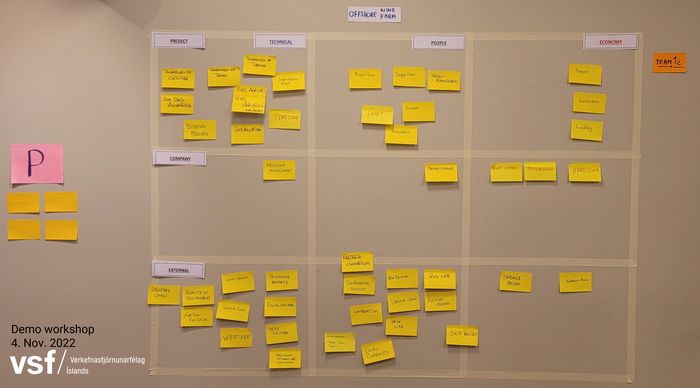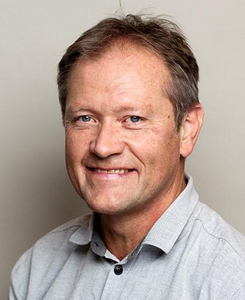FAQ
UNCERTAINTY ANALYSIS
UNCERTAINTY ANALYSIS
WHAT DO YOU ASK ABOUT?

ROBUST ANALYSIS
CREATES SUSTAINABILITY
ABOUT THE SUCCESSIVE PRINCIPLE
WHY IS IT CALLED THE SUCCESSIVE PRINCIPLE?
That’s because:
Successive:
During an analysis, you successively/iteratively look for the biggest uncertainties.
Principle:
A principle is from the Latin principium = beginning, source, tenet.
A principle can be a law, a law of nature, a rule of life or a guideline.
Here is a guideline on how to handle uncertainties using the method.
Handbooks:
The method is described in our handbooks, which can be purchased here:
WHAT DO YOU GET OUT OF THE METHOD?
You get:
- Uncertainties
- An early holistic view of uncertainties (risks & opportunities)
- A separation of uncertainties between deliverables and in the environment
- A Top 10 list of the most significant uncertainties
- Robustness
- An option to choose robustness in e.g. budget and plan
- An opportunity to opt out of bad projects
- A fundamentally more robust project management and governance
- Economy
- An opportunity to make quotes faster for lower costs
- A reduction of stress in the organization
- A sustainable bottom line
WHAT IS A TOP 10 LIST?
This is a list of the top 10 uncertainties found in the Successive Principle analysis.
With the Top10 list you get:
- A list of the top 10 biggest uncertainties, although there are 100-1000’s of things to watch out for
- Ability to focus on what matters, CEO Jeremy Fitton, Skylifter.eu
- Ability to create action plans where it benefits the most
- Stay on top of what’s most important.
WHAT CAN THE METHOD BE USED FOR?
The method can be used to perform uncertainty analysis of:
- Business Cases
- Various alternative solutions
- Project portfolios
- Project programs
- Cost of projects
- Costs for different scenarios
- Social benefit (Cost Benefit analysis) of a project
- Duration of projects
- Company profits
WHAT CHALLENGES MIGHT THERE BE?
For example, there may be the following:
- Talking about what you don’t know (Unknown Unknowns)
- Avoiding discussing details in the beginning
- Everyone should be able to talk openly about all matters
- Collecting a broad spectrum analysis group
- Guiding participants around the pitfalls
WHAT ARE THE PITFALLS OF THE METHOD?
The 5 most significant ones are:
- That participants biasing each other during the estimation
- Participants include too few external factors
- That there are too few participants
- That the analysis group is not broad spectrum
- Not getting a “driver’s license” for executing the method
There are a number of other pitfalls that we train analysis facilitators to look out for during the preparation and execution of analytics.
HOW LONG DOES AN ANALYSIS TAKE?
The individual parts typically take between:
- ½-3 days of preparation
- ½-3 day workshop
- 1-3 hour presentation
This depends a lot on:
- What’s included: Project, program, business case, etc.
- What is included: Cost and/or duration
- How complex the project is
- How experienced the participants are with the method
- How experienced the company is with the method
WHAT DO YOU USE BRAINSTORMING FOR?
You use a brainstorming session in Successive Principle to spot the general uncertainties that can affect all project deliverables.
There are specific uncertainties for the deliverables themselves.
Brainstorm keywords about what can affect deliveries. These are written down by each participant on A4 paper and then on Post-Its, which are placed in a matrix.
Example: Offshore wind farm, Demo workshop.

Example: Cost of a typical house.
Here, general uncertainties can be e.g.
- Buyer’s knowledge of type houses and the industry
- Maturity for managing requirements, quality, resources, finances
- Suppliers’ and contractors’ skills and experience, credibility
- Geographic, material and conjuncture price index
- Supplier organizations
- Soil conditions and weather
- And so on.
WHAT IS A BASE CASE/REFERENCE SITUATION?
It is a description of what you expect the future project situation to look like. For example, in terms of cost or time.
Generally, an analysis is divided into two groups:
- General uncertainties,
- which can affect all deliveries
- The deliveries
- that the project will deliver
The base case describes the following:
- Purpose and specific objectives of the project
- The overarching assumptions
- Organizational form and participants
- One and only one possible scenario
- For example, only a bridge solution and not a tunnel solution
- Otherwise, create separate base cases for bridge and tunnel
- The project broken down into deliverables as a WBS (Works Breakdown Structure)
- For example, project management, design, testing, procurement, prototyping, production equipment, testing, etc.
It must not contain:
- General uncertainties
- They are included in the general uncertainties group
- Uncertainties in the environment are separated from uncertainties in the deliverables
- Either/Or risks, e.g:
- That more than one re-design test is required
- A supplier going bankrupt
- That materials are not compliant
- The company or partners being acquired
- Similarly for either/or options
This separates the deliveries from the surroundings.
It is practical and efficient to separate the base case from the uncertainties in the environment.
For example, the deliveries for a type house are the same whether the house is delivered in Birmingham, Barcelona or Beijing – but the surroundings are very different. For example, in terms of standards, norms, politics, cultures, languages, contractual relationships, requirements and quality management.
CAN AI BE USED IN THE METHOD?
The short answer is: No, but can in some cases assist in identification of risks.
AI (Artificial Intelligence) is gaining ground in many contexts where you have large amounts of available data with good quality.
Estimations of costs
Most people probably think of the estimates when talking about the use of AI in the Successive Principle.
In order to be able to use AI on, for example, estimating costs, it requires that you have collected a lot of data from different cost types and general uncertainties for different projects, different types of companies, etc.
This is not immediately possible for practical reasons, and access to data from different companies, not least for the projects that have gone badly.
If the starting point is a specific project, e.g. the construction of a new theatre, then it will be possible to retrieve some specific projects and analyse the costs for different sub-elements (foundation, underground parking, canteen, seating, stage, sound and sound equipment, etc.) corresponding to what is done in the Reference Class Forecast (RCF) and then be able to form probability curves for variations of the costs for the individual sub-elements.
This is done successfully in the RCF method.
Estimation of general uncertainties
With the Successive Principle, you can separate the project’s “deliverables” from the general uncertainties.
It will be challenging to separate how the general uncertainties (contractual conditions, competences and experiences, stakeholders, media, law, different market situations, different national cultures, etc.) have affected the historical data (cost of deliveries).
In addition, the Successive method is used to identify Top 10 uncertainties, where the action plans are focused. When an action plan has been defined/implemented, the uncertainty in question is re-estimated and the budget can be updated. The AI probably can’t model this, as it will be very specific to the specific situation of the project.
So it speaks against using AI in the Successive Principle.
Analysis groups
The most important prerequisite for ensuring the quality of the analysis is the composition of the analysis group. This includes that the group is facilitated through the analysis process by a trained facilitator (so that pitfalls are avoided, e.g. bias due to omission of data, availability of data, number of participants, optimism/pessimism, etc.)
The analysis group consists of a number of experienced internal project participants (internal view) and some external (outside view, as Bent Flyvbjerg mentions).
It is doubtful whether AI can simulate an analysis group – and how can you demonstrate that the use of an AI group provides sufficient quality in the results? How can you make sure that there is a “Devil’s Advocate” in an AI group, so that you also get the pessimistic picture in the estimates?
This will probably discourage most people from using AI with the Successive method when there is a lot of money at stake.
Most of all, it will be difficult to use AI to involve the project participants to ensure motivation and ownership of the results.
So, it also speaks against using AI in the Successive Principle.
Identification of general uncertainties.
Here, AI can certainly be of help. For example, try asking “Which general uncertainties can expected to be seen during execution of a railway project?” Then you can ask, for example: “Give me a list of keyword for the most common uncertainties”.
This provides inspiration for keywords that may be useful in a current project.
Other similar questions will probably generate more keywords for the uncertainty analysis.
A supplementary method
We recommend that you consider using RCF as a supplementary method. It is based on thorough analyses of historical data and can contribute to further insight into a large, complex project.
This type of double analysis is called “Tandem analysis”.
DO YOU HAVE TO PAY FOR A LICENSE?
The short answer is: No, thankfully not.
Ownership succession method
The method is developed by Dr. Tech. Steen Lichtenberg at the Technical University of Denmark in the 1980s to 2000.
The method has since been further developed. For example, scaling the method for smaller companies and projects – to ensure cost-effective analysis. This can be seen, for example, in Region Ôstra Götaland in Sweden, which uses the method in three different versions in relation to size and complexity. They are a public company and have published a guide for scaling the methodology.
The method is not subject to any licenses and can be freely used by anyone.
We recommend that you try the method in a few of your own projects beforehand.
We also provide training in facilitating the method.


